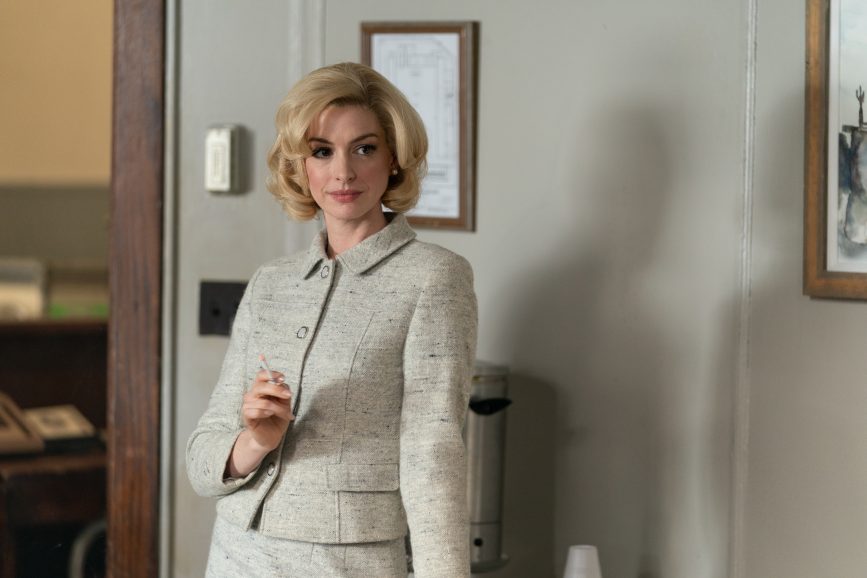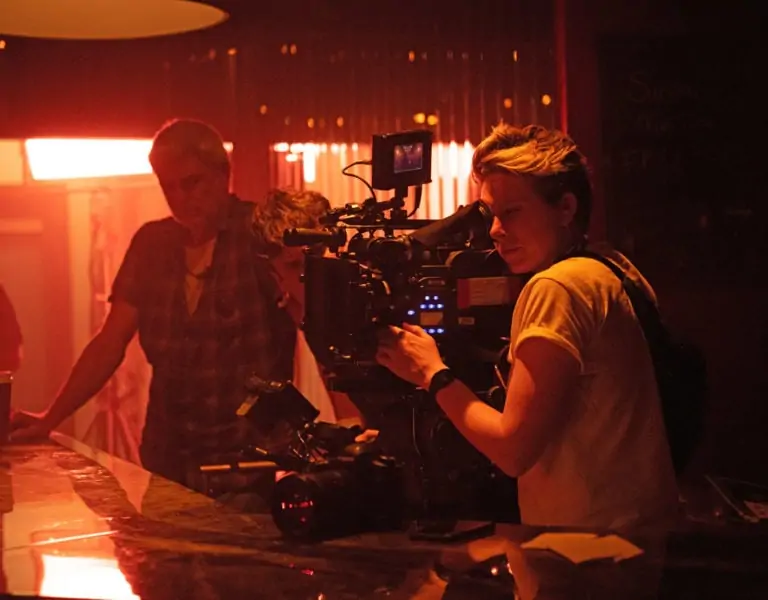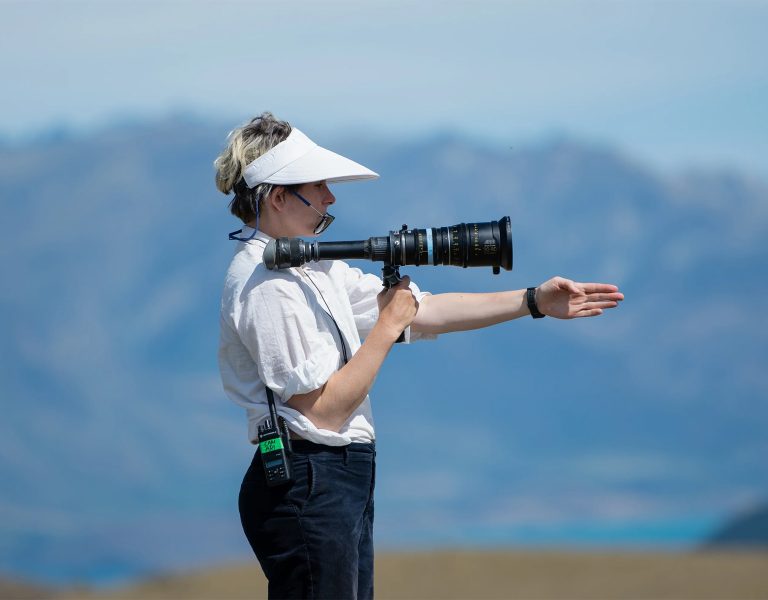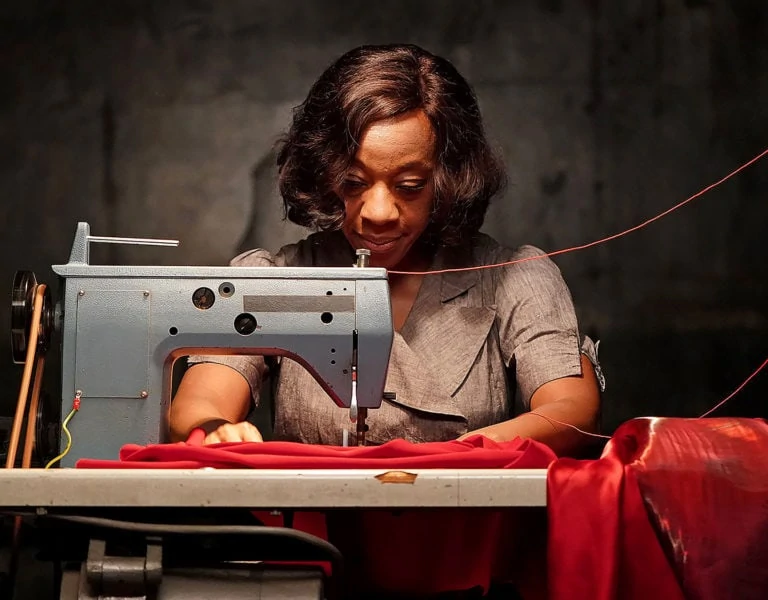Dark and stormy
Ari Wegner ASC ACS takes on the psycho drama of Eileen and the wintry conditions of a New Jersey shoot.
Reuniting for the first time since Lady Macbeth in 2016, director William Oldroyd and cinematographer Ari Wegner ASC ACS take on another psychological period drama and literary adaptation centering on a strong female protagonist. This time the character arc is reversed; while Lady Macbeth is ultimately trapped despite murder, Eileen arguably finds an escape.
“When William sent me the script I also read the book (by US author Ottessa Moshfegh) and I really loved her voice and the style of writing which was hypnotic, very dark and seductive,” says Wegner. “There’s a lot of overlap with Lady Macbeth. I love characters that you fall love with and then they challenge you by doing things that you kind of wish they wouldn’t.”
You can trace that theme as well as Wegner’s willingness to challenge to audience expectations in her other work including The Power of the Dog and The Wonder.

Eileen is taken from Moshfegh’s 2015 Man Booker Prize-shortlisted novel of the same name. The story follows an unhappy 24-year-old woman working at a prison in Boston in the 1960s whose friendship with a child psychologist takes a sinister turn. The script is by Moshfegh and her partner Luke Goebel.
US production companies Likely Story and Fifth Season were joined by Film4 in funding the film, which stars Thomasin McKenzie (Last Night in Soho) and Anne Hathaway (Les Miserables) and premiered at Sundance. It moves through the gears from Douglas Sirk melodrama with hints of film noir to full-on Hitchcockian psycho-drama, not least with Hathaway’s femme fatale dressed as a smart blonde.
“From a visual perspective the challenge was to closely track where the audience’s mind is in relation to our main character. You’ve got to help them visually, manipulate them, to fall in love with Eileen knowing you are going to take them to a very challenging place.”
Much of the discussion she had with Oldroyd in prep was around lighting for Eileen and how the house where she lives with her abusive father (played by Shea Whigham) should look. “Looking great is priority but the overriding one was helping the audience form a very strong attachment with Eileen, for them to be on her team and want what she wants knowing that later the audience will be conflicted in their response.”
Yet even Hitchcock might not have gone so far as the perversity of this story’s final act. “There’s definitely a Hitchcock vibe going on,” Wegner says, “but we didn’t talk about specific films we wanted to emulate. It’s quite a unique film in structure. It does have fairly strong genre favours but then about three quarters of the way through it turns into something quite different.”

She and Oldroyd also spent a deal of time discussing how to make the tonal transitions and in particular how the film’s final section would work. “The basement scene takes up a huge amount of screen time and unfolds almost in realtime. It’s also dramatically unexpected, our visuals change and relationships get shaken up. There are not many films that do that and even if there were they would probably not have helped us learn anything.”
As any filmgoer knows, bad things happen in basements. Wegner and her director were keen to avoid those clichés. “We decided to do the opposite which is to light so that you can see everything and there’s nowhere to hide. In contrast to the amber colours we use throughout the rest of the picture, here we select a green-white tone which also has a kitchen-like industrial brightness. I’m so glad we did it because as I think the result is a lot scarier than the classic swinging light bulb.”
She adds, “I love what it did to the skin tones and the dress that Eileen is wearing in that scene. Costume designer Olga Mill referred to her dress as a Christmas present, that Eileen looks like a Christmas ornament, which is then contrasted with bloodiness against the white. I’m glad we went that way and didn’t go with classic Hitchcock.”
The scene was shot with two cameras (A camera by Blake Johnson) to capture reactions to the character’s monologue and unlike other scenes in the film was not photoboarded until rehearsals with the actors on location.

Setting the mood
For the period setting Wegner looked at a huge amount of photography from the time, not unlike her prep for The Power of the Dog. “It was all about getting your mind as deep into that world as possible with a view that by the time you shoot if there’s anything out of place you will notice it,” she says.
They shot in New Jersey (to access tax credits) with locations dressed for a story set in Massachusetts. “Given that I’m not familiar with either of those states I had to get my head around cheating the locations so that it would make sense to an American,” Wegner says.
Beach locations were tricky to find and the New Jersey state prohibits shooting in any correctional facility (or even setting foot even in car park of a prison) so they had to get creative. “We found an elementary school partially closed for the holidays and did a bit of construction within that and we also shot in a courthouse holding area.”
They shot over Christmas 2021 into 2022 when it was “bitterly cold but there was no snow”. Since the story demanded snow they had to use SFX, but juggling this along with high-cost items like period cars was a challenge for the film’s strict budget. “The way William and I thought about it was if you don’t see off the edges of the frame then the illusion is maintained. The moment you see off the edges the whole thing falls apart. So defining where those edges were meant photoboarding every shot and sharing those with SFX and art department. We had very little room for manoeuvre.”

Shooting a period film is a very different proposition to a contemporary drama because of the relative lack of freedom to improvise decisions like camera positions on the day (unless you have a very large budget). Although this puts a lot of pressure on the DP to nail the visuals up front, Wegner says she enjoys the creative challenge. “I say I enjoy it now,” she laughs, “but probably at the time, a little less so. I do enjoy parameters and boxes to work in. I find infinite choice more overwhelming than projects with boundaries.”
Shooting on film would have eclipsed the budget so the next best was to shoot on the ARRI Alexa Mini paired with the same set of Bausch + Lomb Super Baltar primes she used on Lady Macbeth. She also selected a Angénieux 25-250 HR, a lens she says she was already in love with. “It’s the kind of zoom that is mostly in the kit to be a back-up lens but there’s something about it that really suited the period. When I put the lens on it felt like time travel looking through the eyepiece.”
As part of the visual style she and Oldroyd deploy a number of slow zooms. “I enjoy a slow zoom,” she says. “It suits the psychological thriller aspect of the story. For some reason a slow zoom conjures up thoughts of going into someone’s mind for an audience.”

Genre flavours
Deliberately shot in the dark and dreary winter months to mirror the claustrophobia of Eileen’s smalltown existence, the script called for numerous night shots and dark interiors. “For the night interiors and to get into the genre flavours, I tried to bring in a lot of FX shadows, leaves and branches and to break up the light in a way that adds to the wintry feel and extra creepiness,” Wegner explains. “We were working with various shades of amber from strong sodium vapor to tungsten with patches of strong reds and I had either hard lights with branches outside [the windows] or bouncing off reflective surfaces.”
She says her general approach to lighting focuses on setting an atmosphere that takes into account the drama and tension of the moment and also of story time and place. “I’ve often thought that you want the lighting to tell you what the temperature of the air is or what it smells like,” she says. “This was a cold time of year. Things never things seem to be completely dried out and the sun goes down early. For someone like Eileen, Christmas was not always cheerful. The cosiness of a warm home to return to doesn’t exist for her. Instead, the whole place reeks of darkness and wetness. We deliberately wetted the exteriors and used as much snow as we could muster.”

The final sequence set in the difficult terrain of a national park was the most physically taxing part of the shoot. The sequence required them to shoot at night through to dawn into day and without the budget for huge fixtures, Wegner worked wonders with a fog machine and headlights to silhouette characters. “It was a very tightly planned dusk for dawn schedule over two-to-three days using two cameras, two cars, sometimes a stunt diver and we used every minute of those three dawns after getting the shot list down to the bare minimum we would need to tell this story.”
The forest and frozen swamp “were not terribly conducive to moving fast – especially when everyone is half frozen – but the result was incredibly beautiful. It was worth the discomfort.”
She graded remotely with Nat Jencks at Postworks in New York and did something she had not done before, which was to add grain and halation as a first step. “That process is often left to the end but doing so up front meant our eyes were accustomed to it versus sitting with the footage in high resolution for two weeks and then making that major change. For me, it was all about texture and getting the level of grain right. Nat was fantastic in helping us push the distortion further in the direction we were already going.”

The final shot ends enigmatically on a static shot from a bridge overlooking traffic on a highway with the camera still rolling. The credits appear over the shot rather than fading to black, inviting the audience to ruminate on Eileen’s fate.
“We wanted a shot that basically said she was merging into the world but is anonymous and has successfully disguised herself “as a normal person”, as Rebecca (Anne Hathaway) might say. It wasn’t in the original script and the novel is perhaps more definitive about what happens next, but we always like the idea of her hitchhiking into the city while allowing the audience to project what they want onto her future. She has been to a dark place and has been transformed.”


















